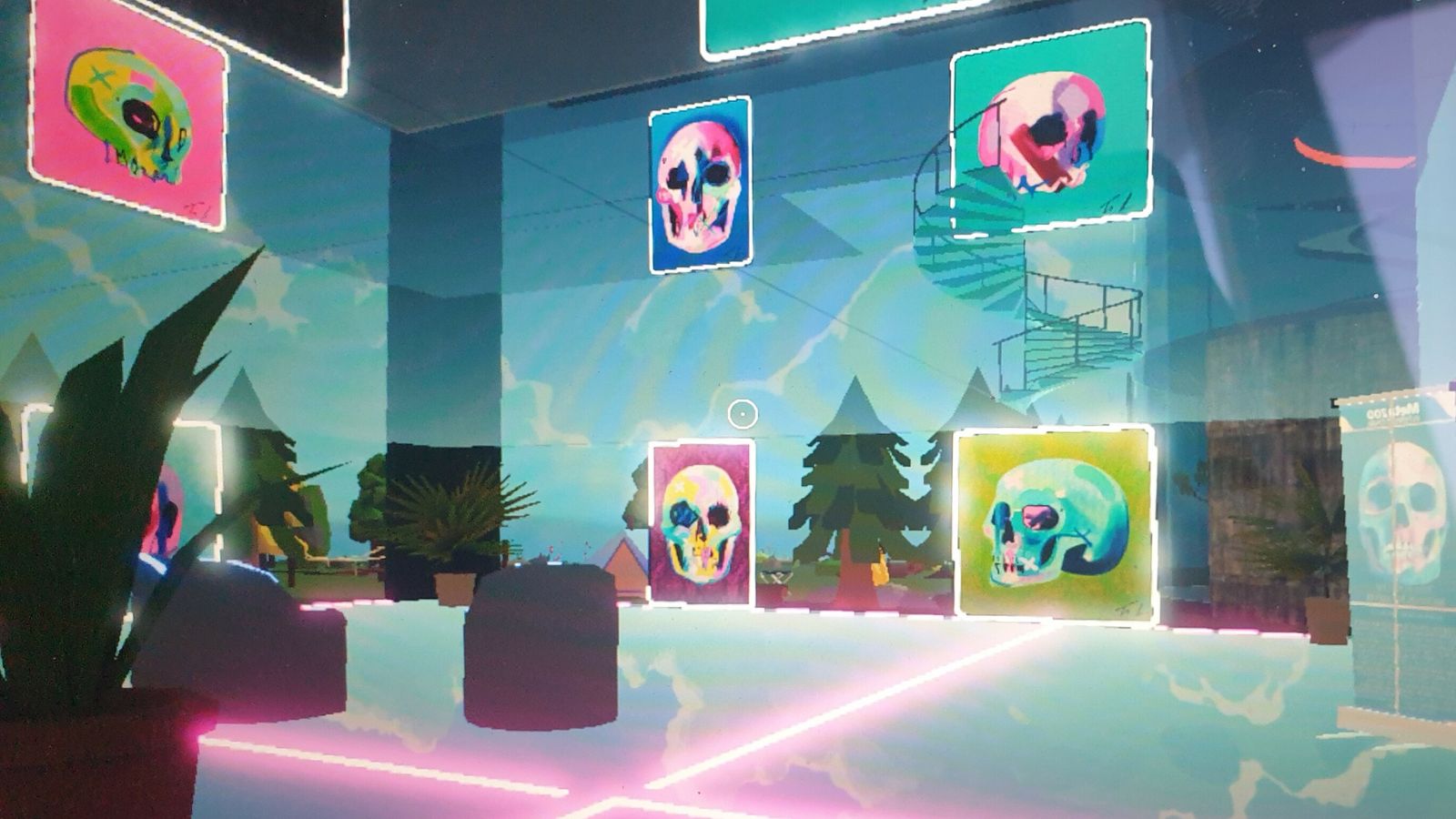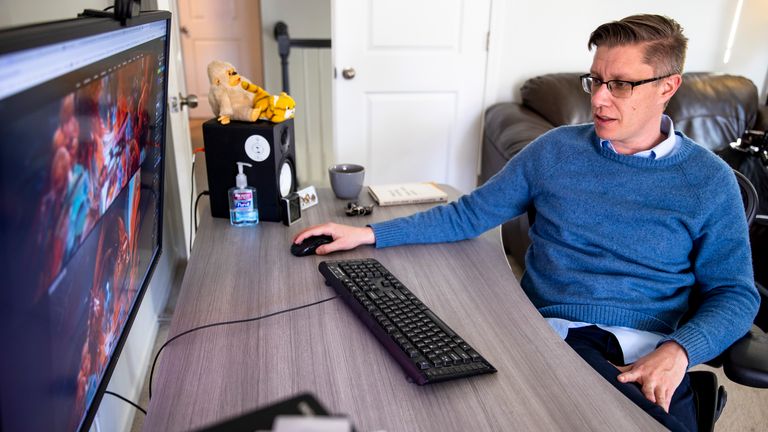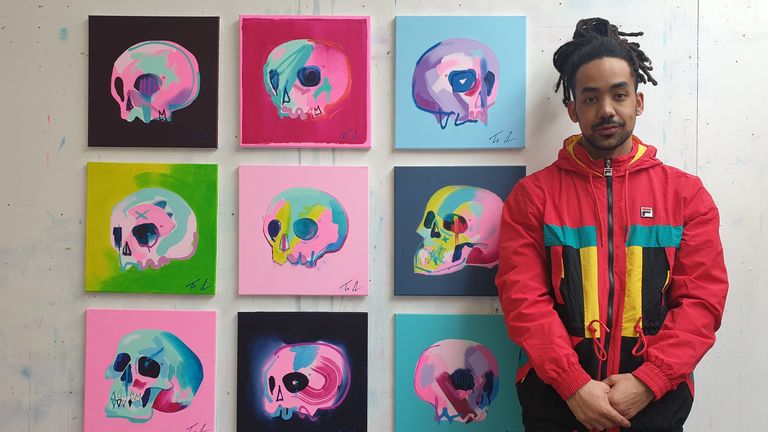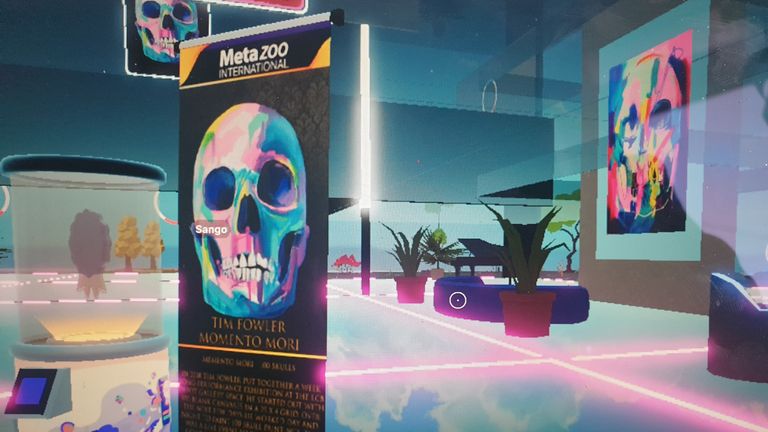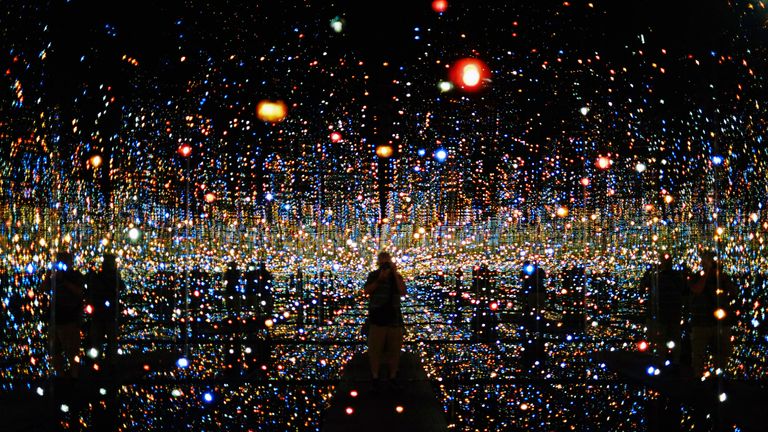“I know you can be underwhelmed and you can be overwhelmed, but can you ever just be whelmed?”
So Chastity asks Bianca in the excellent 1999 comedy 10 Things I Hate About You, and pretty much sums up my feelings the first time I Googled the words “non-fungible token”. Overwhelmed, in this case, because what is non-fungible? And also: can there ever just be fungible?
Turns out, yes there can. Cue tech experts (oh, and economics and language experts, and probably anyone under the age of 25) calling me stupid here, but I am definitely not alone.
Before 2021, for the majority of people, the likelihood is the word non-fungible wasn’t something that ever came up in day-to-day conversation. But now it is coming up in headlines, and lots of them, about digital artwork, with many pieces selling for huge amounts.
So what is an NFT? Basically, it’s the most recent craze from the cryptocurrency world and it has exploded in the past few months. If something is fungible, it is interchangeable with another good or asset – non-fungible means it is not.
In the real world, good examples of non-fungible assets include football trading cards and plane tickets. Although two plane tickets may look the same, each one will have a different destination, seat number and airline class, meaning they cannot be swapped like for like.
An NFT is a unique digital asset. Sceptics may not be convinced, but there’s a reason investors are willing to part with their cash.
In March, the first sale ever by a major auction house of a piece of art that does not exist in physical form was held by Christie’s.
Created by digital artist Beeple, it sold for $69.3m (£50.3m). Earlier this week, an online sale of NFTs by the digital artist Pak fetched a total of $16.8m (£12.2m) at Sotheby’s, including an image of a single pixel which sold for $1.36m (£987,000).
In each case, no physical object changed hands – the NFTs exist exclusively in digital form, with blockchain (a digital record) acting as a public ledger to verify ownership status. While critics argue that these works can be copied and shared, the experts say this is no different to the physical world. Copies are not the original.
There have been many other examples of NFT sales in recent months. You may have heard of Kings Of Leon becoming the first band to release an album as an NFT, musician Grimes selling a digital art collection for £4.3m, or Twitter founder and chief executive Jack Dorsey selling his first ever tweet for just over £2m.
A group of cryptocurrency enthusiasts even banded together to buy an original Banksy for £68,000 – then burnt it in a livestreamed video. The art was then turned into an NFT… which sold for £290,000.
So what is it all about? Art revolutionised, investment, or both?
I spoke to artist Tim Fowler, Sotheby’s Max Moore, and Ashley Ramos, from NFT marketplace Nifty Gateway, to find out more.
‘The biggest barricade for our generation is getting your head round the physical and the digital’
Tim Fowler, from Leicester, has been working full-time as an artist for about three years, selling his work in the traditional sense – physical paintings for people to hang on their walls. Earlier this year, he took the leap into the digital world, basing his NFTs on a 2018 performance exhibition at which people were able to watch as he created 100 paintings of his signature skulls in a gallery over the course of a week.
He was approached by Sango, who created NFT Crypto Trolls and runs the virtual MetaZoo gallery in online gaming world Decentraland, and asked if he would like to get involved. The 35-year-old admits he was sceptical at first, but curiosity got the better of him.
“I asked the same questions that people ask me: what are [buyers] paying for? Why are people buying it? Does it mean they have a legal copyright over the piece they bought, to reproduce? Once I kind of figured it out, we got the ball rolling.”
Unlike solely digital artists, Tim still creates physical pieces, photographing his work to create the NFTs. He decided to use his skull designs as they fitted in with the idea of being collectible.
“The idea was that we slowly release 100 of these skulls again and each one will have various mints – another word for edition. So there could be 10 NFTs of one, but others might just have one NFT, making them rarer. So the idea is that we slowly release these skulls and we get people to start wanting to collect them… like Pokemon cards, football stickers, that kind of thing.”
Tim has made around £6,000 selling NFT skulls in the last three weeks. And rather from diminishing the value of the physical pieces, he says the digital world has only helped to elevate his traditional work. “In a way, it makes that piece, the actual physical piece, more desirable and more valuable because there’s already a collector base for that image,” he says. “It’s like selling out a print edition but you still have the original painting.”
This is something that gamers and cryptocurrency experts have been clued up about for a while, he says. So why is it so difficult for some people to understand?
“I think the biggest barricade for the majority of people, especially from our generation, is getting your head around the physical and the digital,” says Fowler. “If you speak to kids nowadays, they’ll spend a lot of money in games like Fortnite where they’re buying clothing… or a sword or whatever.
“The way I see it is, a lot of people buying the NFTs, they come from the crypto world. They’re buying something that they’re going to hold on to with the idea that a few years down the line, that’ll be worth more money. It’s the same reason they’re buying Bitcoin.
“That’s why it confuses a lot of people, because they’re looking at it from an art buyer’s world, like we buy paintings to hang on our wall. But a lot of these people, they’re buying it to to keep in their crypto wallets.”
Basically, it’s as much about investment as art, he says. And for the artists themselves, unlike often when physical works are sold on, they receive royalties further down the line.
“I sell a skull for $200 and because everything’s on the blockchain, that’s all monitored, so I basically get paid royalties from anything that’s sold of mine further down the line. So if someone’s to sell this piece again for, say, a grand, 10 grand, whatever, I’d always get 10% of that every time it sells for every single piece. It means I get this residual income post selling the piece myself.
“In the physical world, that’s not the case… so this keeps the artist making money.”
‘I look at NFTs as an art form’
Max Moore, co-head of Sotheby’s contemporary art day sales in New York, also admits he wasn’t too sure about NFTs at first. But in the past year he started to explore the world, and was put in touch with Pak at the beginning of 2021.
The sale of Pak’s Fungible Collection saw 3,080 unique buyers of 23,598 “open edition” cube units, which achieved $14,026,000 over the course of three days of sales. Two “one-of-one” digital artworks, The Switch and The Pixel, sold for $1.44 million and $1.36 million, with 10 and 12 bidders, respectively.
“I’d been monitoring the NFT market with scepticism since 2018, honestly,” he says. “I was introduced initially to the collection of works called CryptoPunks, and for me visually they didn’t really speak to anything, I guess conceptually there was something about them. But at the time I didn’t pay much attention.
“I luckily, by chance, was put in touch with Pak in early January. I still again was really there to learn. I had no intention or plans of bringing this on to a grand stage at Sotheby’s at the time, but through those conversations with Pak, I started to realise and see that there was a true creative process behind their work. The way that they approached it, each kind of piece had a specific purpose, had a specific meaning, that tied back to to the last and also to the future.
“So for me, it was understanding that there was a true genius and creativity that was coming out of this artist and I quickly realised that there was something here.”
One of the main questions being asked about NFT art is why people are willing to spend large amounts of money – in some cases millions – on art that cannot be put on display in the traditional sense, and can be shared online?
Max says it took him time to understand, too, but he realised that appreciators of NFT art see it in exactly the same way. “They were having that same reaction to the artwork, they were having that same connection with the artwork,” he says. “They didn’t need that physical connection to a physical object. It wasn’t for me to say that, just because I wasn’t connecting with it, because it was different for me, that this couldn’t be the same relationship that I was having myself.
“I quickly realised that there’s a whole world, a whole marketplace of individuals, that have absolutely no interest in physical, tangible objects in the same way that we do, and are completely enamoured by the digital assets. They are usually a younger demographic, I would say, that has made their fortune in cryptocurrencies and have believed in it since the beginning; they’re early adopters from 2012 to 2015, that have bought into the idea of digital assets becoming ingrained within our future society.”
Max says he hopes those who have bought the Pak works will keep hold of them.
“I hope that collectors will remain collectors and won’t just immediately start flipping the work. I think that there’s an education from a collector perspective that needs to occur for this market to fully take form and grow, and it can’t just be a subset of the audience that is really responding to the artwork – and there’s a lot of actors in there that are just here for a financial gain. So I think that still needs to strengthen. But a result like this I hope can steer the conversation in that direction.”
‘You could take a picture of the Mona Lisa. It doesn’t mean you own it’
Ashley Ramos is a senior producer at Nifty Gateway, which collaborated with Sotheby’s on the Pak sale, and also hosted Grimes’ sale. The platform has sold more than £72m of “unique, identifiable, and secure digital art” since it started operations just a year ago, in March 2020.
Even her Zoom backdrop is an NFT (pictured in the Instagram post below), by designer and 3D artist Frank Guzzone, showing how the artworks can be displayed physically on TV screens, should a collector wish.
“I would argue that many people have always loved experiential art, not just something physical or tangible, but experiential art,” she says. “Some would say that [Japanese contemporary artist] Yayoi Kusama is a great example of that. Her infinity rooms, those are experiences, those are not things that you can take home and put on your wall. Or the Mark Rothko room in the Tate Modern, too, that’s an experience. People love going to museums just to take in the art, not to take it home with them.
“[But] I think the common misconception is that you can’t display these in your home, and you can… you can display [NFTs] in your home and you can bring that experience in home should you want to. But I think the vast majority of our consumers, digital native consumers, is that they’re in this not so much for the take away, but what they’re giving back. And that’s what we’re seeing, these record-breaking numbers. Our collectors are coming to the table in a really big way for the sake of supporting artistry and the artists on our platform. And if nothing at all is accomplished but that that’s just a truly beautiful thing.”
How does Nifty Gateway respond to the argument that the works can be easily copied? Well, it’s clearly a question they hear a lot.
“You could take a picture of the Mona Lisa,” says Ashley. “It doesn’t mean that you own it. And I think the reason that everybody knows that you don’t own the Mona Lisa just because you take a picture of it is because it has a social value around who owns it and and that becomes respected. So I think within the respected NFT community, you are aware of who owns it through through their profiles on Nifty Gateway…
“It could be considered a concern – but no more a concern than somebody going to the Louvre and taking a picture of one of those pieces and then saying, ‘I own this. This is mine’.”
